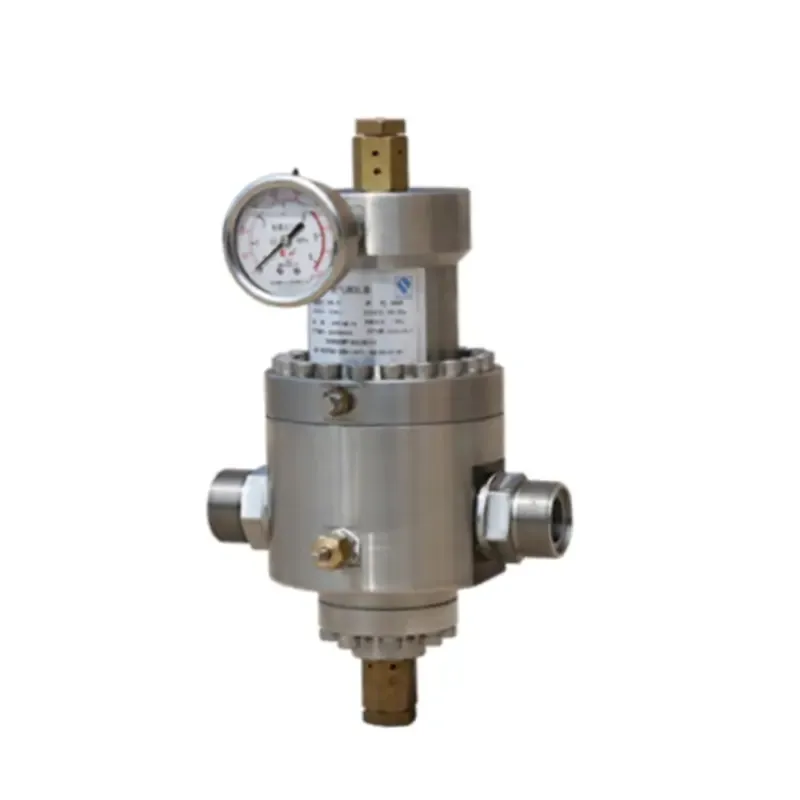
Dec . 19, 2024 07:03
Back to list
pressure reducing valve
Understanding Pressure Reducing Valves Functionality, Importance, and Applications
Pressure Reducing Valves (PRVs) are critical components in various fluid control systems, designed to regulate and maintain a constant downstream pressure, despite fluctuations in upstream pressure. These valves play a crucial role in ensuring the safety, efficiency, and reliability of hydraulic and pneumatic systems, and they are widely used across different industries.
Functionality of Pressure Reducing Valves
A Pressure Reducing Valve operates on a relatively simple principle. It allows high-pressure fluid from an upstream source to enter the valve, where it is then restricted to a preset lower pressure before being released downstream. This regulation is achieved through a spring-loaded mechanism or a diaphragm that senses the downstream pressure and adjusts the valve opening accordingly.
When the downstream pressure drops below a predetermined set point, the valve opens further to allow more fluid through, and when the pressure exceeds this set point, the valve restricts the flow to maintain stability. This dynamic regulation helps protect downstream equipment from damage that can occur due to overpressure while also ensuring consistent performance within the system.
Importance of Pressure Reducing Valves
The significance of PRVs cannot be overstated. In many industrial applications, equipment and processes are designed to operate at specific pressure ranges. Excessive pressure can lead to catastrophic failures, resulting in costly downtime, damages, and potential hazards to personnel. By controlling pressure levels, PRVs contribute to the longevity of equipment and overall system integrity.
Moreover, PRVs enhance the efficiency of systems by reducing energy consumption. High-pressure fluid often requires more energy to move through a system. By lowering the pressure to the necessary levels, PRVs can significantly decrease energy costs and improve the system's overall efficiency.
Applications of Pressure Reducing Valves
PRVs are utilized in numerous applications across various sectors, including
pressure reducing valve

2. Industrial Processes In manufacturing facilities, PRVs are employed to control the pressure of fluids used in processes such as molding, heating, and cooling. By maintaining optimal pressure levels, PRVs ensure product quality and consistency.
3. Steam Systems In steam applications, PRVs regulate steam pressure to improve safety and efficiency in heating processes. They help prevent equipment damage and ensure effective thermal transfer.
4. HVAC Systems In heating, ventilation, and air conditioning (HVAC) systems, PRVs maintain balanced pressures throughout the system, contributing to user comfort and system reliability.
5. Hydraulic Systems PRVs are essential in hydraulic systems where they control the pressure of hydraulic fluids used in machinery, ensuring safe operation without exceeding equipment limits.
Selection and Maintenance of Pressure Reducing Valves
Choosing the right PRV for a specific application involves considering several factors, including the desired pressure range, flow rate, fluid type, and potential environmental conditions. Proper installation and regular maintenance of PRVs are also vital to ensure their optimal performance. This involves checking for leaks, ensuring that the set pressure is maintained, and conducting periodic calibrations.
Conclusion
Pressure Reducing Valves are indispensable in modern fluid control systems, providing effective pressure regulation that enhances safety, extends equipment life, and optimizes operational efficiency. Understanding their functionality, applications, and maintenance requirements is crucial for engineers and technicians tasked with implementing and managing various fluid systems. By investing in high-quality PRVs and adhering to best practices for their use, organizations can achieve significant long-term benefits in terms of safety, cost savings, and operational efficiency.
Next:
Latest news
-
Safety Valve Spring-Loaded Design Overpressure ProtectionNewsJul.25,2025
-
Precision Voltage Regulator AC5 Accuracy Grade PerformanceNewsJul.25,2025
-
Natural Gas Pressure Regulating Skid Industrial Pipeline ApplicationsNewsJul.25,2025
-
Natural Gas Filter Stainless Steel Mesh Element DesignNewsJul.25,2025
-
Gas Pressure Regulator Valve Direct-Acting Spring-Loaded DesignNewsJul.25,2025
-
Decompression Equipment Multi-Stage Heat Exchange System DesignNewsJul.25,2025

